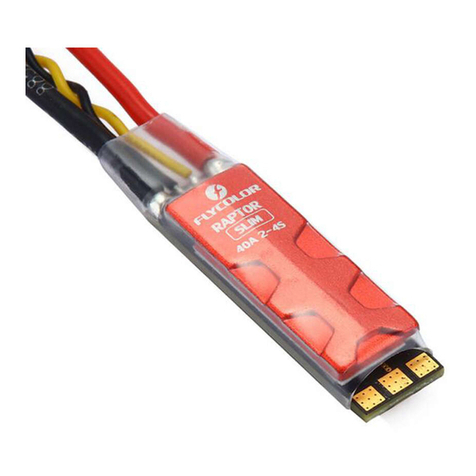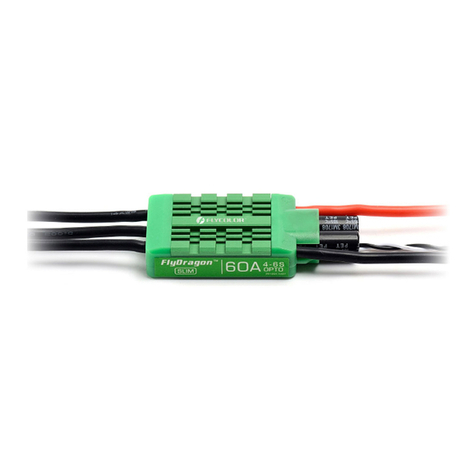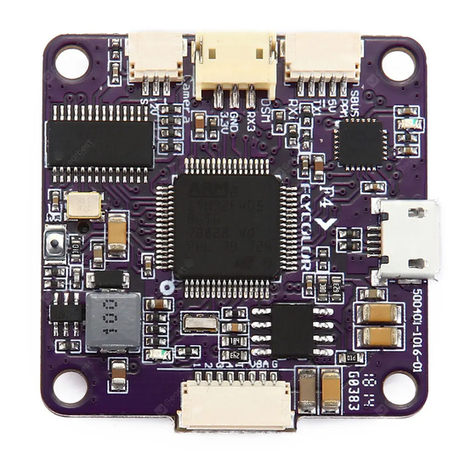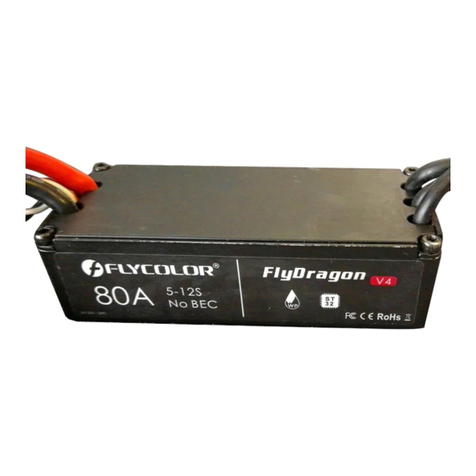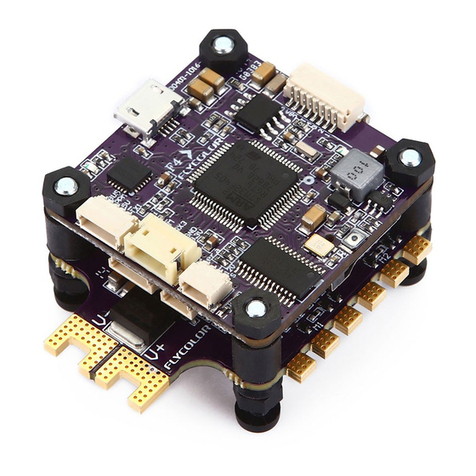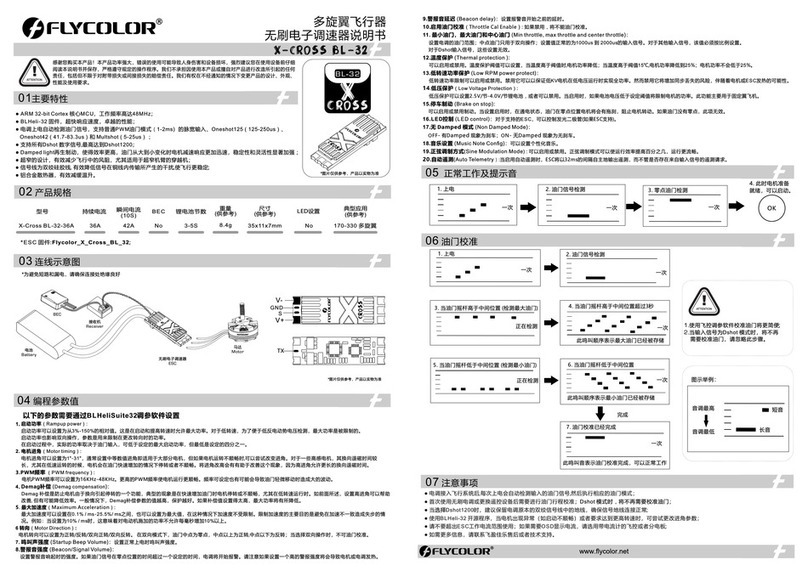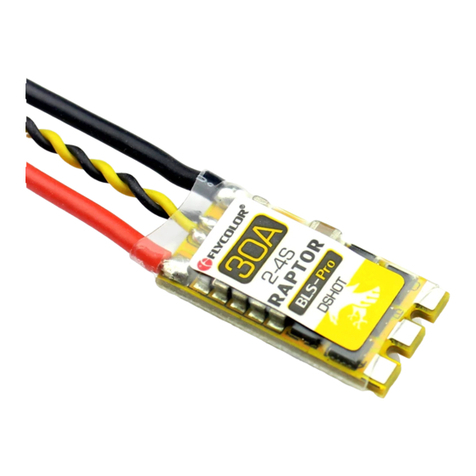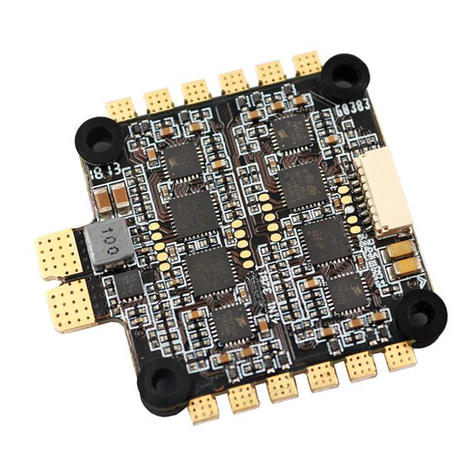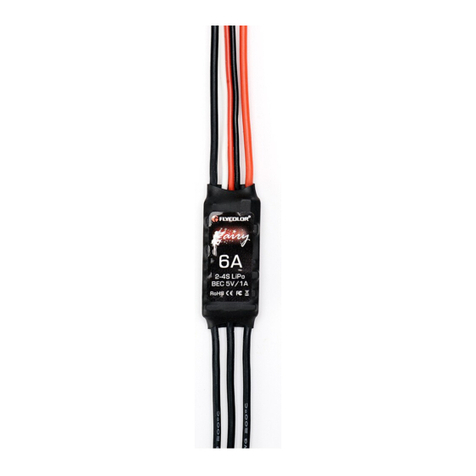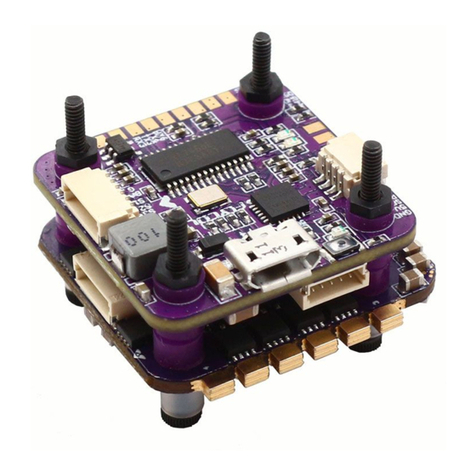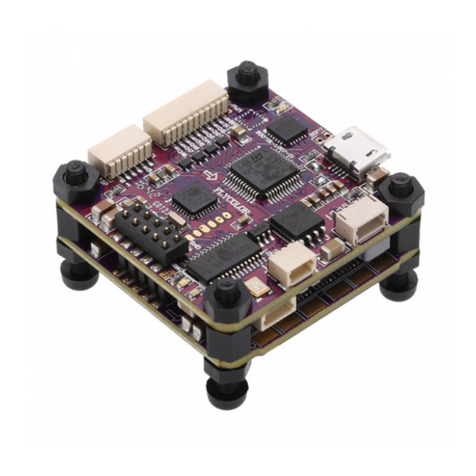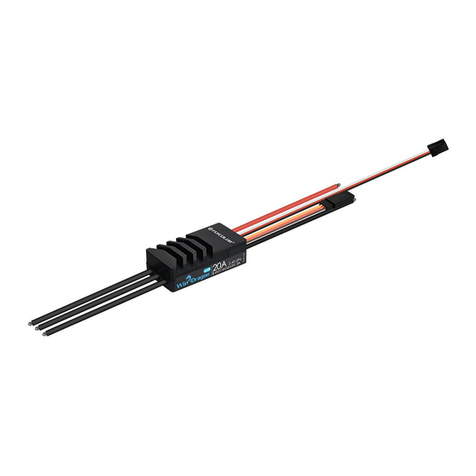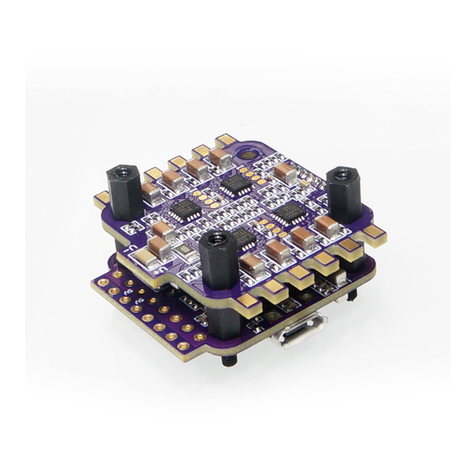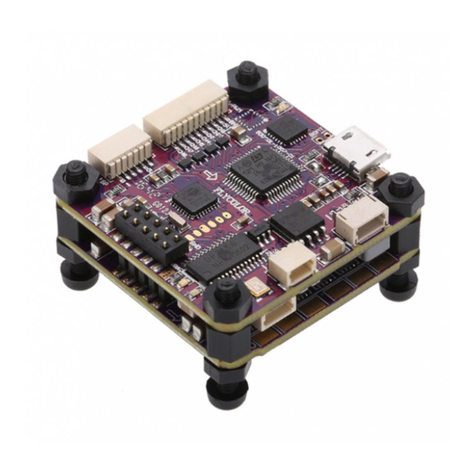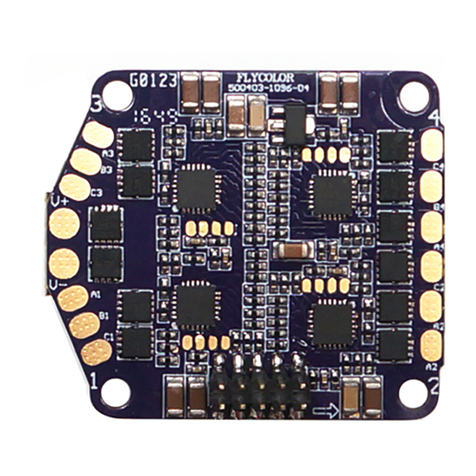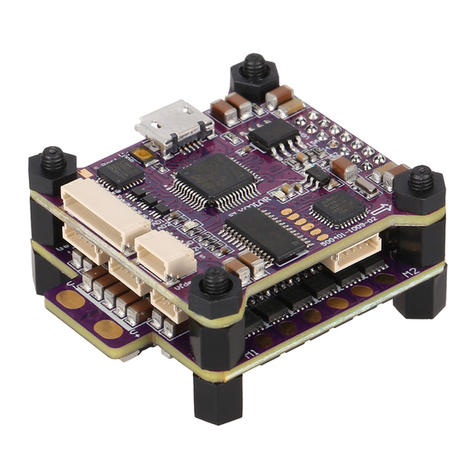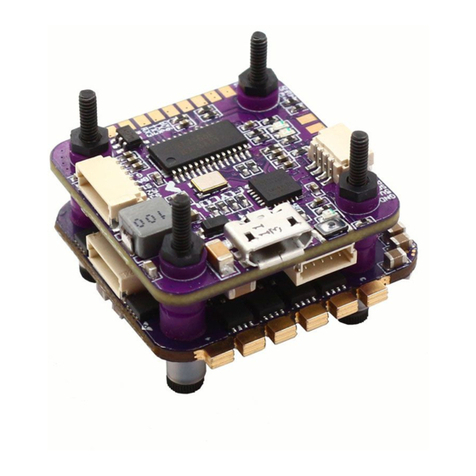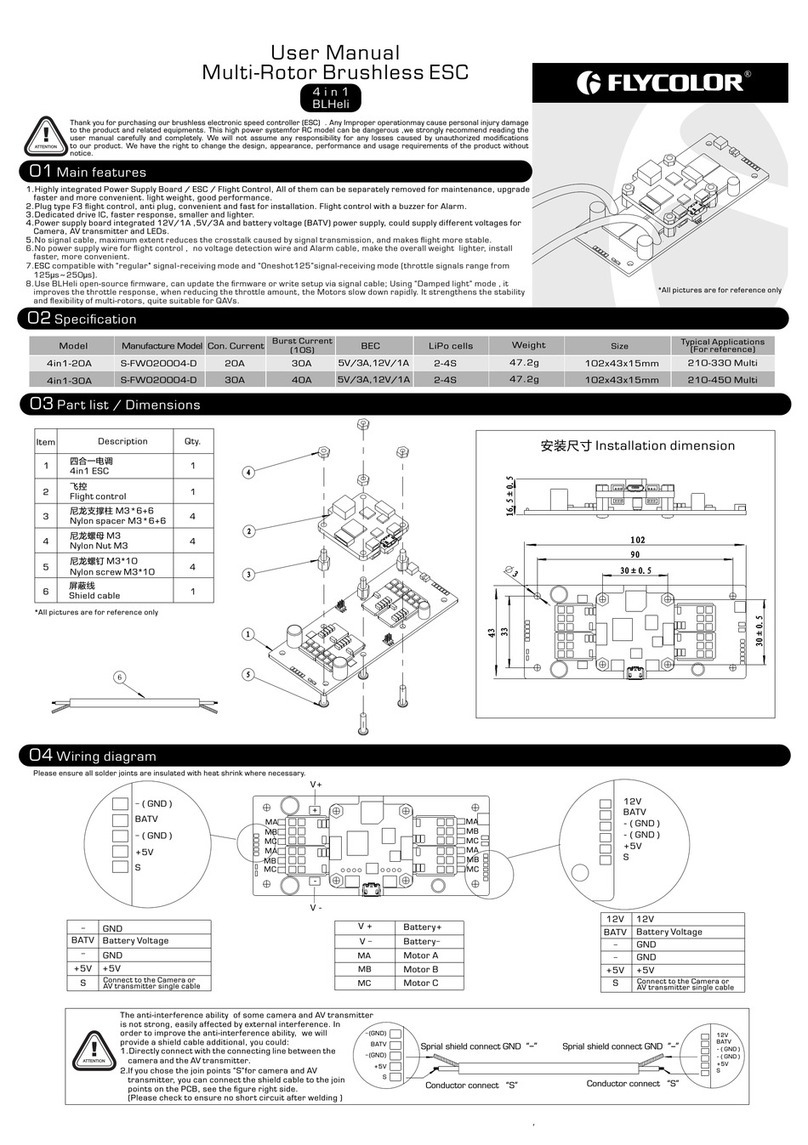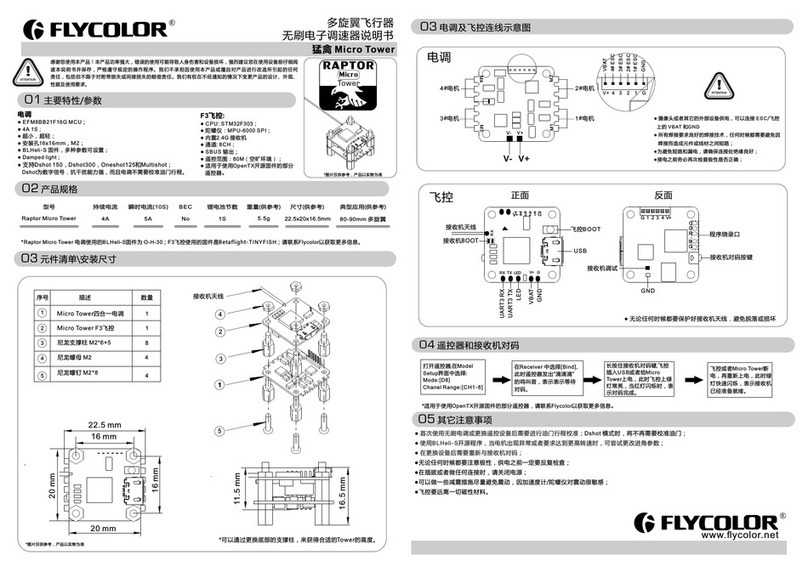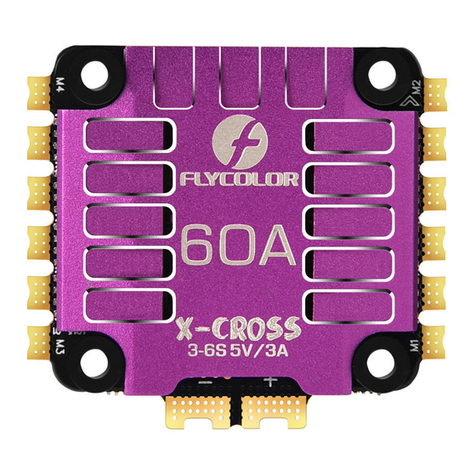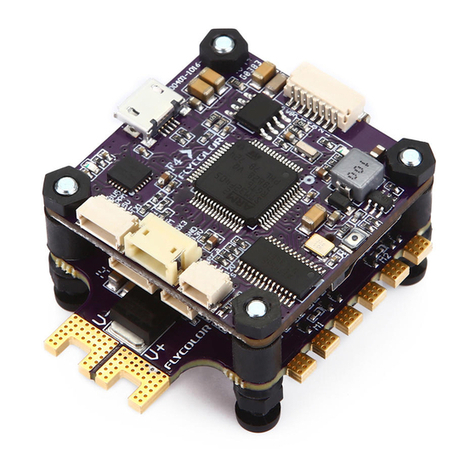01 Main features
02 Specifications
03 Wiring diagram
04 Programming parameter
BEC
Raptor B LS-Mini -15A 15A 20A 2-3S 5g 90-150 Multi
No 15x11.5x4.2mm
RAPTOR BLS-Mini
ATTENTION
05 Beeps-Normal operation
06 Beeps - Throttle calibration
07 Others
www.flycolor.net
RAPTOR
DSHOT
BLS-Mini
Batter y
Receiv er
BEC
ESC Motor
● EF M8BB 21F16G M C U, pipe lined 8-bit C8051 core with 50 M H z maximum operating frequency.
● Dedicated 3in1 driver, faster response. E SC maximum speed is limited to500k e RP M .
● Ultra small size, more suitable for small multirotor.
● BL Heli-S firmwar e is designed for superior performance in multirotors, and uses hardware genera ted motor
pwm for smooth throttle response and silent operation.
● Damped light does regenerative braking, causing v ery fast mo tor retardation, and inherently also does active
freewheeling.
● Supports features to prevent sync loss. There are tuneable paramete rs that can m ake the code run well even in
the most demanding situations, although default settings will work excellently in normal operating environments.
● The code supports regular 1-2ms pulse width PW M input, as well as Oneshot and Multshot . The input signal is
automatically detected by the ES C upo n power up.
● Supports Dshot150, Dshot300 and Dshot600.Dshot is digita l signal, anti-interference ability is stronger, and do not need throttle calibr ation.
● The silicone twisted-pair of the throttle signal cable incre ase the service life,and effectively reduces the crosstalk caused by signal transmission,
and makes flight more stable.
Thank you for using our product. Any Improper operation may cause personal injury damage to the
product and related equipments. This high power system for R C model can be dangerous ,we strongly
recommend reading the user manual carefully and completely. We will not assume any responsibility for any
losses caused by unauthorized modifications to our product. We have the right to change the design,
appearance, performance and usage requirements of the product without notice.
Con. Current Burst Current
(10S)
Size
(For reference)
Weight
(For reference)
LiPo cells Typical Applications
(For reference)
Model
*Raptor B L S-Mini is using the BL Heli-S firmware; Please contact Flycolor for more information.G-H-30
User Manual
Multi-Rotor Brushless ESC
*All pict ures are for re ference only
*Please ensure all solder joints are insulated with heat shrink where necessary.
1. Startup power:
Startup power can be set to relative values from 0.031 to 1.5. This is the maximum power that is allowed during startup. Actual applied power
depends on throttle input, and can be lower, but the minimum level is a q uarter of the maximum level. Startup power also affects bidirectional
operation, as the parameter is used to limit the power applied dur ing direction reversal. For low rpms, the maximum power to the motor is limited,
in order to facilitate detection of low B EM F voltages. The maximum power allowed can be set via the startup power parameter.
2. Commutation timing:
Commutation timing can be set to low/mediumlow/medium/mediumhigh/high, that correspond to 0°/7.5°/15°/22.5°/30° timing advance.
Typically a medium setting will work fine, but if the motor stutters it can be beneficial to change timing. Some motors with high inductance can have
a very long commutation demagnetization time. This can result in moto r stop or stu tter upon quick throttle increase, particularly when running at a
low rpm. Setting timing to high will allow more time for demagneti zation, and often helps.
3. Demag compensation:
Demag compensation is a feature to protect from motor stalls caused by long winding demagnetization time after commutation. The typical
symptom is motor stop or stutter upon quick throttle increase, particularly when r unning at a low rpm. As mentioned above, setting high
commutation timing normally helps, but at the cost of efficiency.Generally, a hi gher value of the compensation parameter gives better protection.
If demag compensation is set too high, maximum power can be somewhat reduce d.
4. Direction:
Rotation direction can be set to fwd/rev/bidirectional fwd/bidire ctional rev. In bidirectional mode, center throttle is zero and above is fwd rotation
and below is reverse rotation. When bidirectional operatio n is selected, programming by TX is disab led.
5. Beep strength:
Sets the strength of beeps under normal operation.
6. Beacon strength:
Sets the strength of beeps when beeping beacon beeps. The E SC will start beeping beacon beeps if the throttle sig nal has been zero for a given
time. Note that setting a high beacon strength can cause hot motors or E SC s!
Programming parameters below can be accessed from the configuration software (B LH eliSuite):
7. Beacon delay:
Beacon delay sets the delay before beacon beeping starts.
: If disabled, throttle calibration is disabled. 8. Programming by TX
Please notice that throttle stick can calibrate throttle range only, and can not pr ogramming paramenter via throttle stick .
9. Min throttle, max throttle and center throttle:
These settings set the throttle range of the E SC . Center throttle is only used for bidirectional operation. The values given fo r these settings are for
a normal 1000us to 2000us input signal, and for the other input sign als, the va lues must be scaled.
10.Thermal protection:
Thermal protection can be enabled or disabled. And the temperature threshold can be programmed between 80°C and 140°C(from rev16.3).
The E SC measures tempera ture within the M CU and limits motor power if the temperature is too high. Motor power is limited in four steps:
- If the temperature is above threshold , motor power is limited to 75%.
- If the temperature is above threshold 5°C, motor power is limited to 50%.
- If the temperature is above threshold 10°C, motor power is limited to 25%.
- If the temperature is above threshold 15°C, motor power is limited to 0%.
11.Low R P M power protect:
Power limiting for low RP M s ca n be enabled or disabled. Disabling it can be necessary in order to achieve fu ll power on some low kV motors
running on a low supply voltage. However, disabling it i ncreases the risk of sync loss, with the possibility of toasting motor or ES C.
12.Brake on stop:
Brake on stop can be enabled or disabled. When enabled, brake will be applied when throttle is zero. For nonzero throttle, this setting has no effect.
1. Power up: 2.Throttle signal detected
(arming sequence start):
OK
Once Once
3.Zero throttle detected
(arming sequence end):
Once
4.After this, the
motor will run.
ATTENTION
1.Power up: 2.Throttle signal detected
(arming sequence start):
Once
3.When throttle is above midstick
(measuring max throttle):
4.If throttle is above midstick for 3 seconds:
This beep sequence indicates that max
throttle has been stored
Once
While
measuring
5.When throttle is below midstick
(measuring min throttle):
While
measuring
6.If throttle is below midstick for 3 seconds:
This beep sequence indicates that min
throttle has been stored.
Once
Complete
7.Throttle calibration is complete.
After this, the motor will run.
Once
Example:
Highest tone
Lowest tone
Short beep
Long beep
1.Throttle calibration will be more simple if
using Flight Controller Configurator.
2.When the input signal is Dshot, throttle
calibration is disabled, and the throttle
calibration values are ignored.
● After the E S C connected to the flight syst em, it will automatically detect the input throttle signals every time it powered on, and then e xecute the
corresponding signal-receiving mode.
● User need to calibrate the throttle range when starting to use a new ES C or another transmitter. When the input signal is Dshot, throttle ca libration
is disabled
● When some abnormality occurs in ES C driving the motor or need the motor to reach a higher RP M , user can try to change the timing.
● Please contact Flycolor sales or technical support for more informati on.
User Manual
Multi-Rotor Brushless ESC
251 4 0 0 - 1 073, V 1.0
